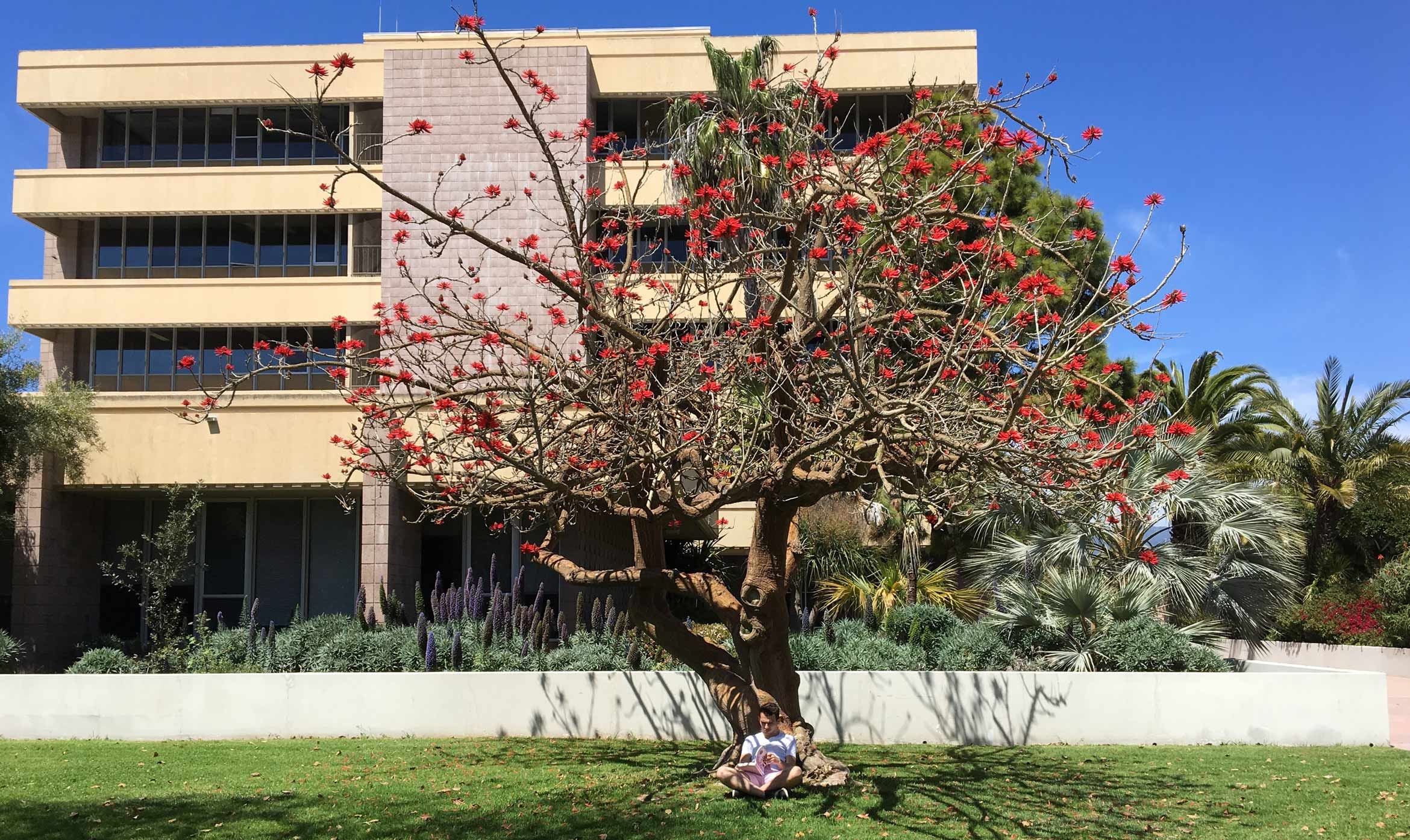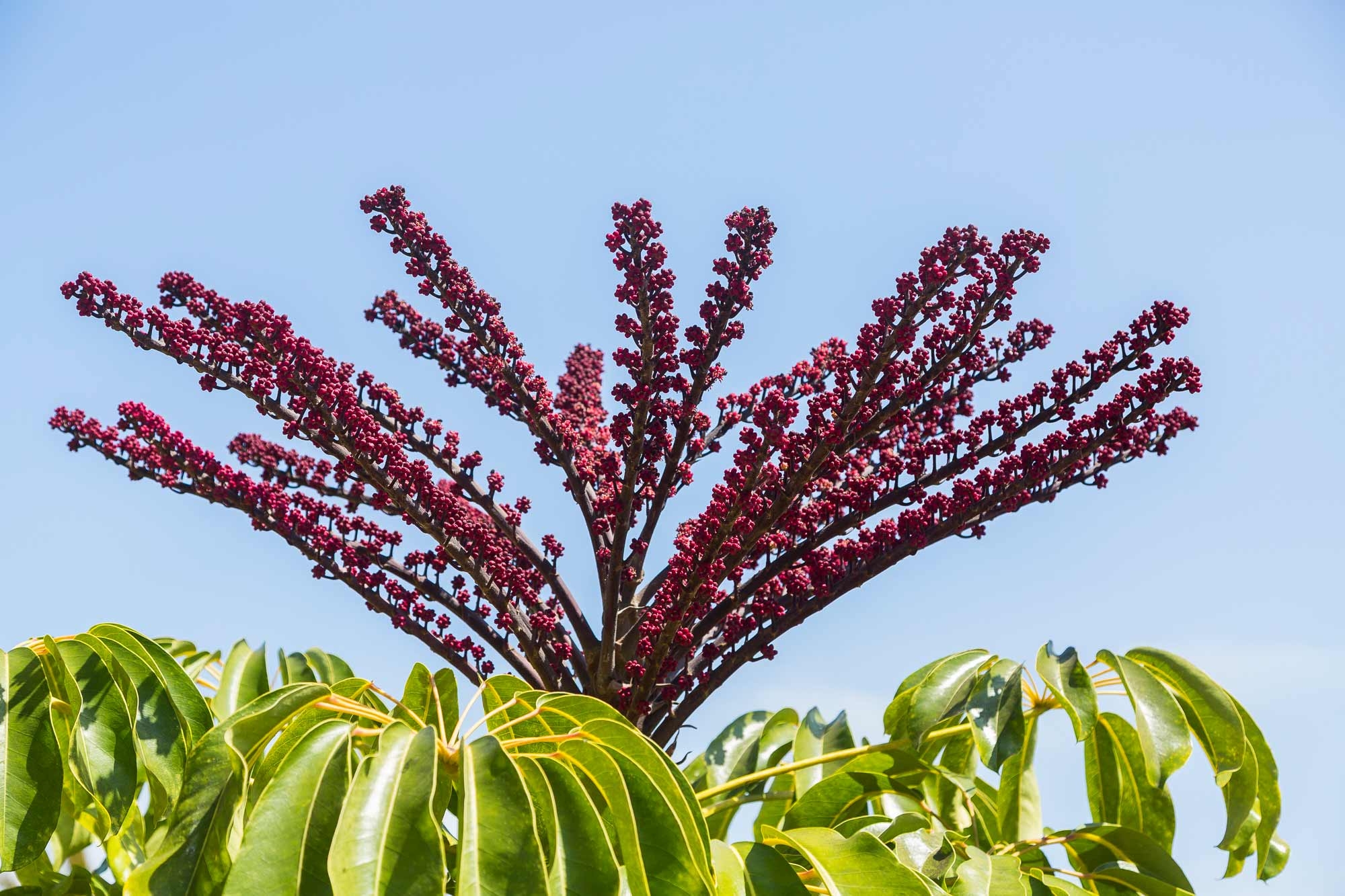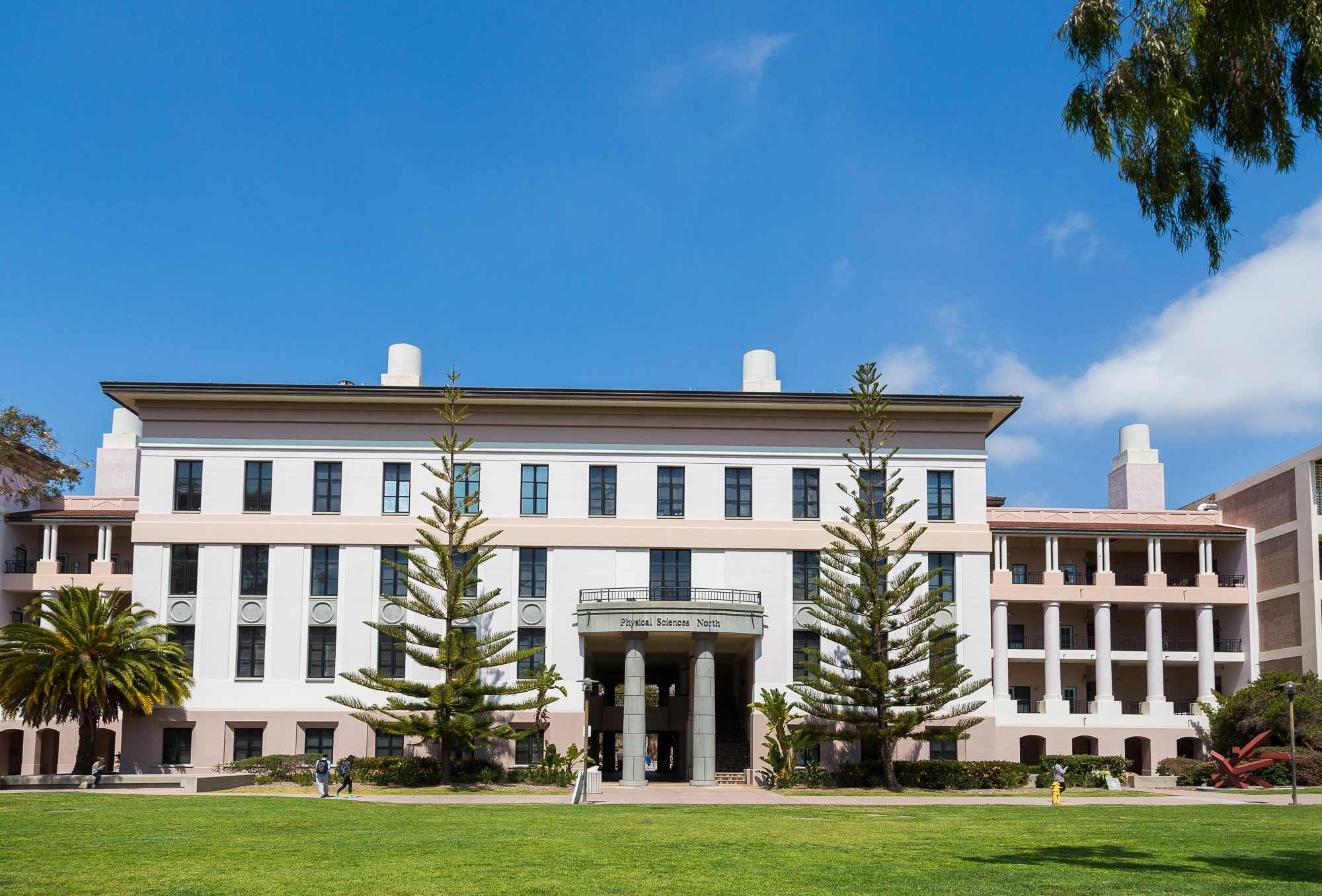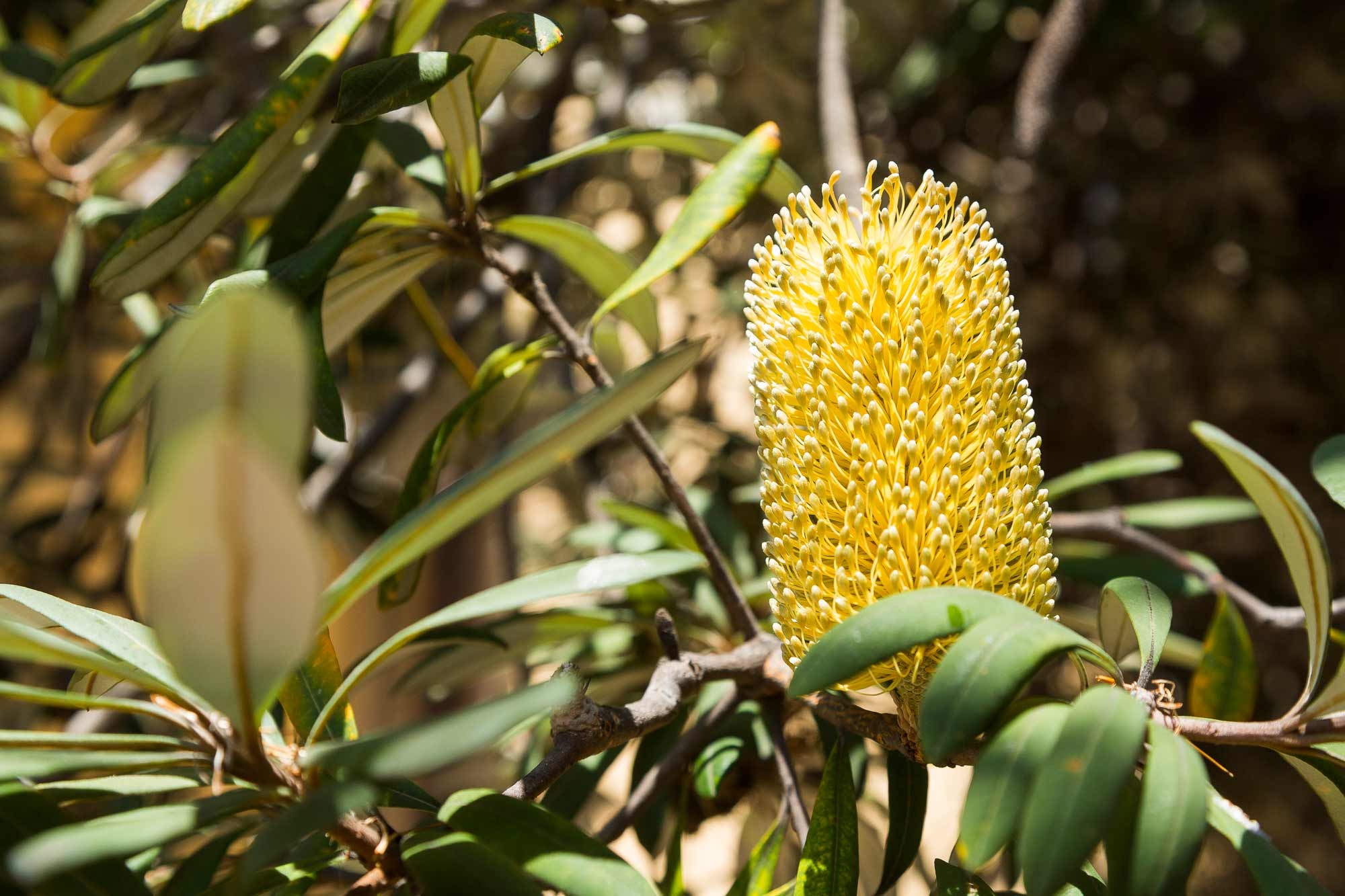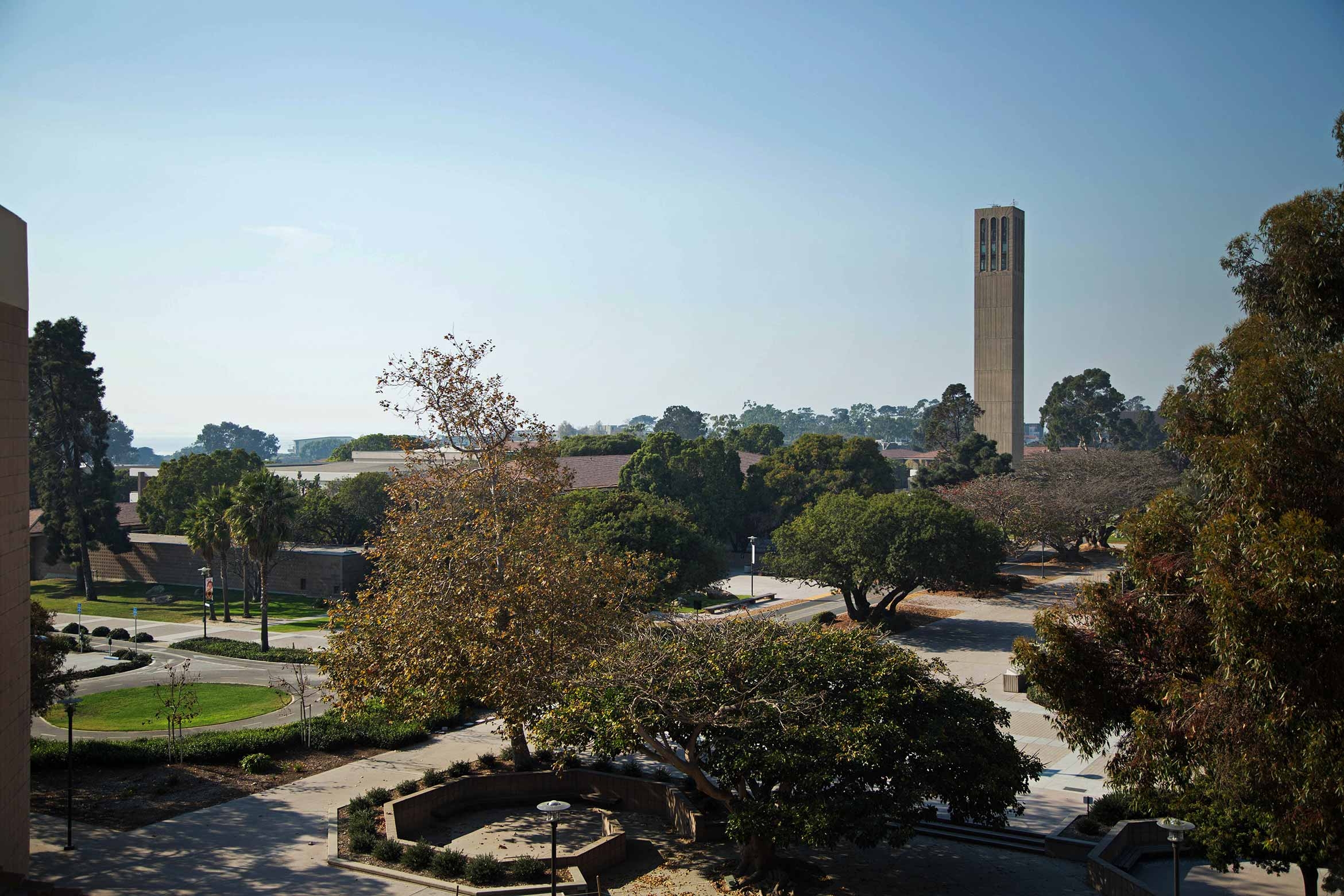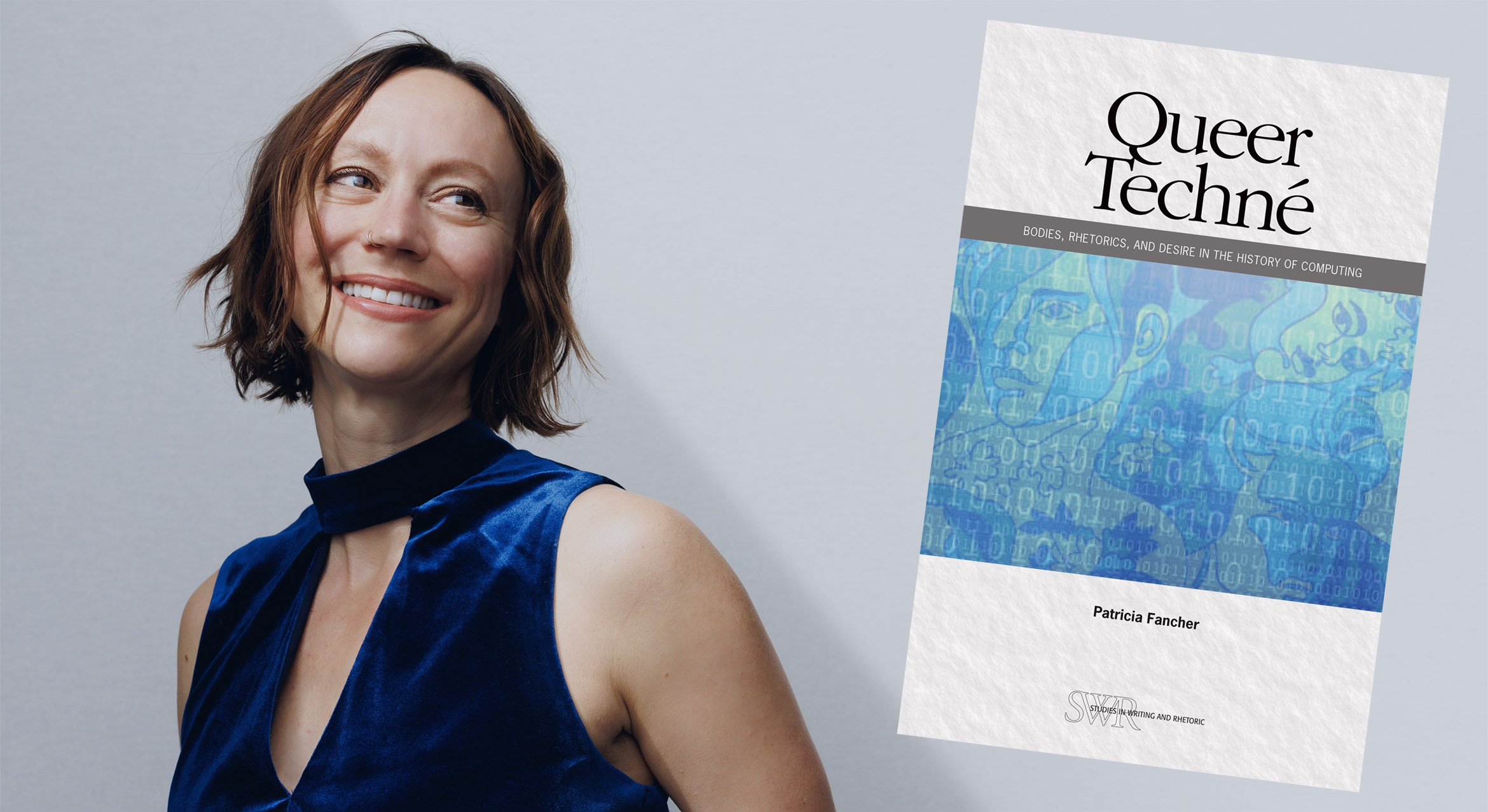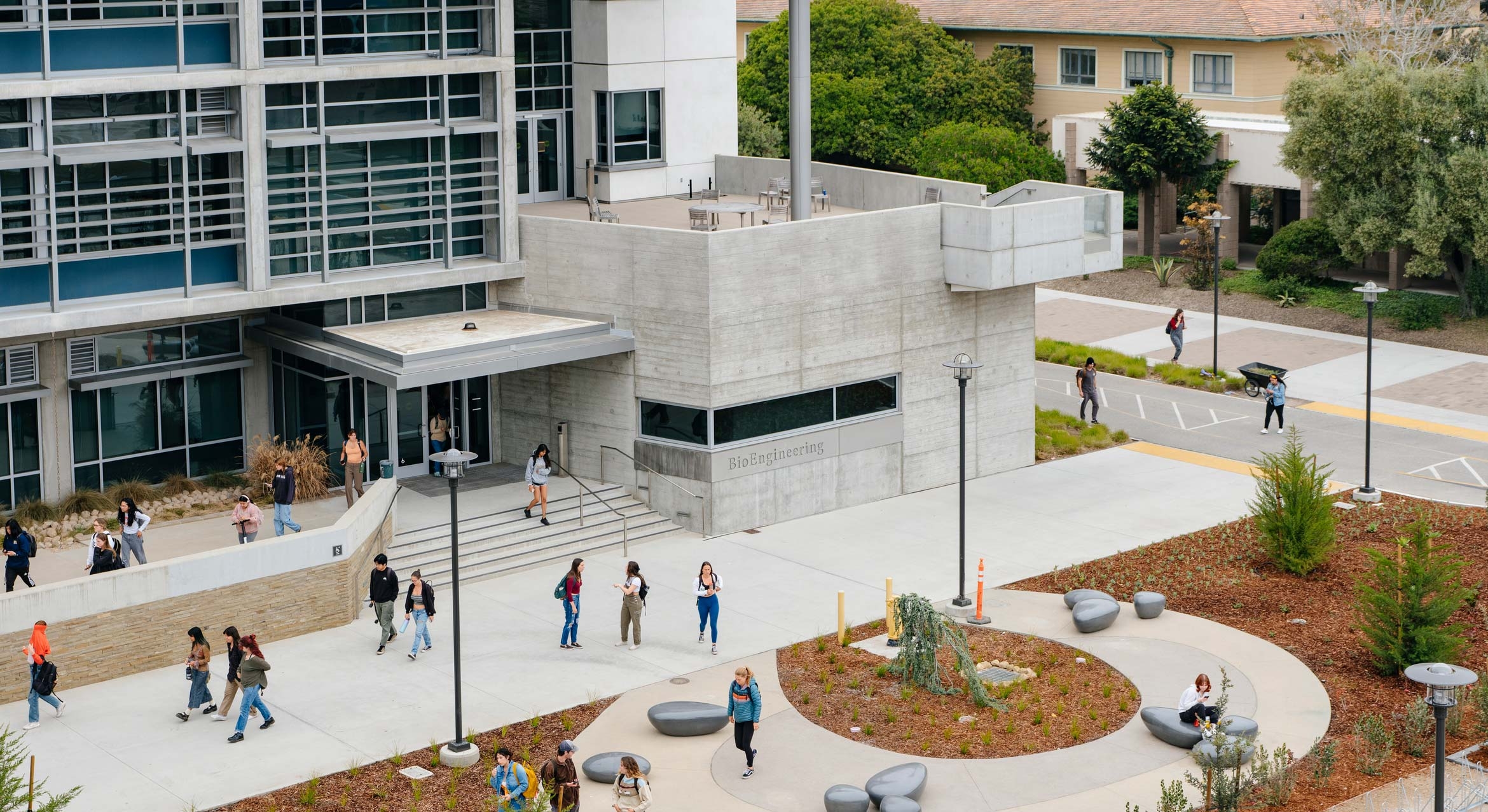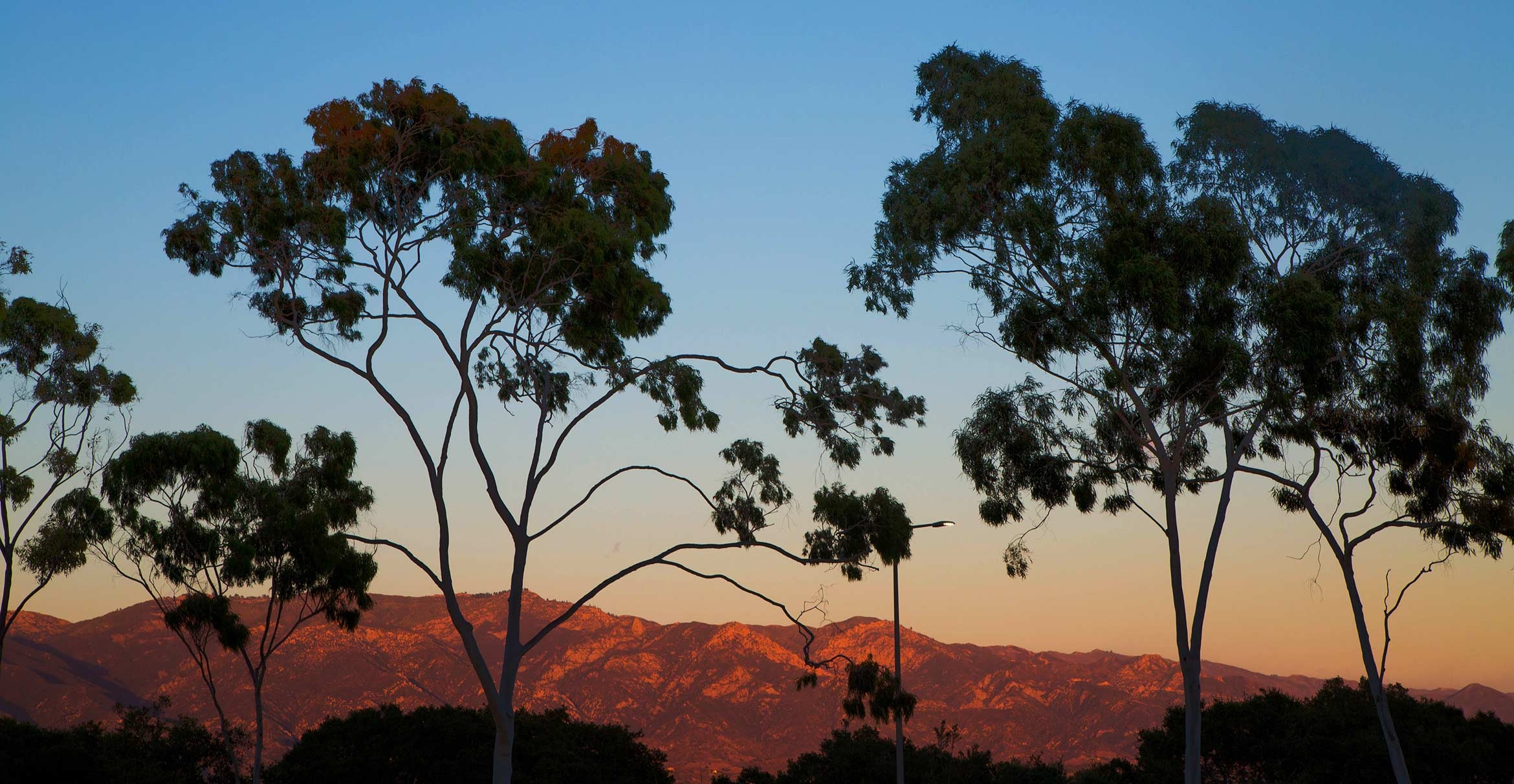
Branching Out
In the courtyard of Webb Hall grow a pair of small, unassuming pine trees. Likely the rarest plants on campus, according to Cameron Hannah-Bick, manager of the university’s biology greenhouse, these Martinez pinyons are found naturally in a small region of the Sierra Madre Occidental range in central Mexico.
The endangered pine tree had escaped the notice of botanists until 1964. The two on campus arrived here courtesy of former greenhouse manager John Bleck, who planted them in the late 1980s from seeds he acquired from the Huntington Garden.
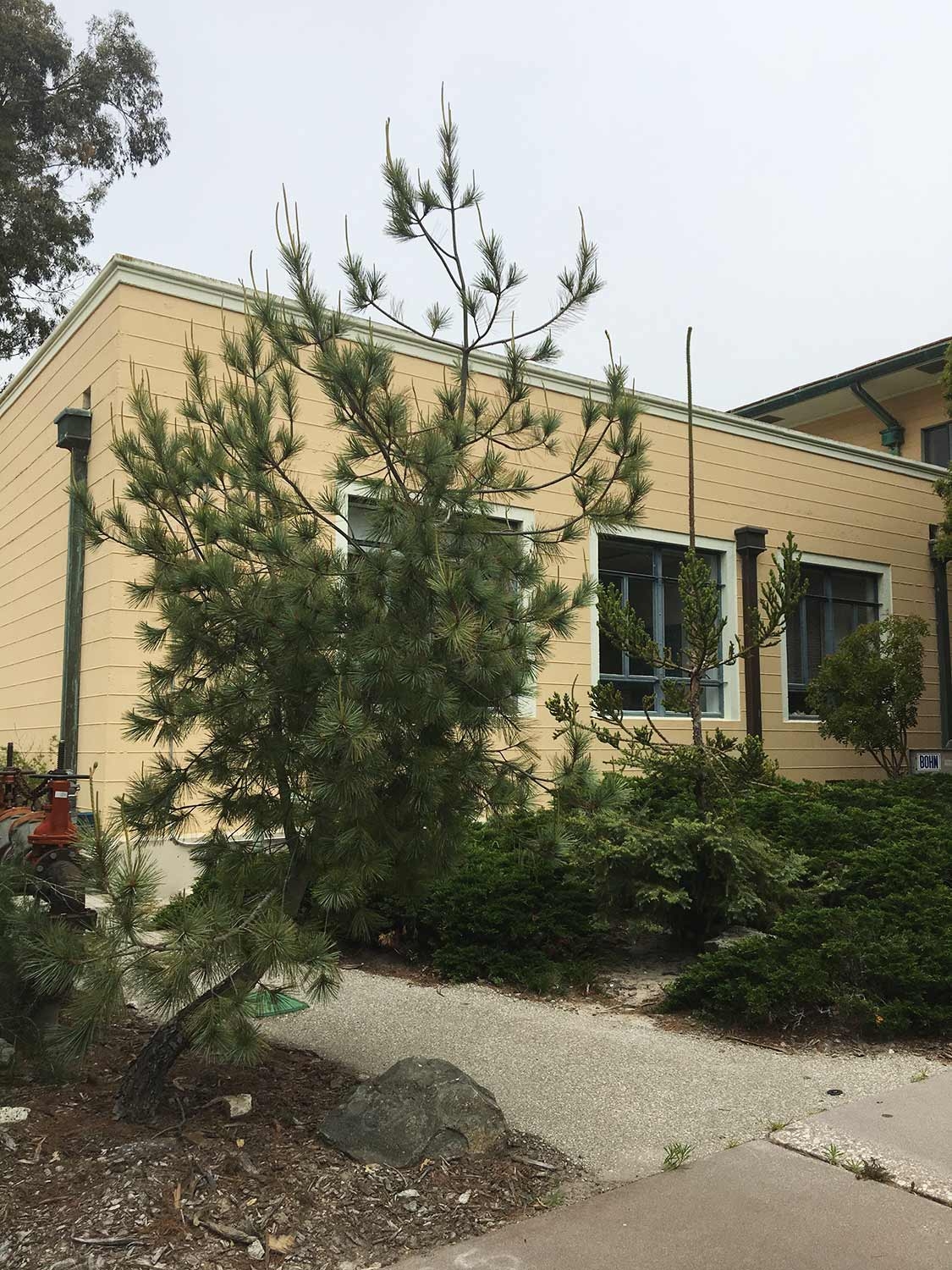
Thanks to Southern California’s idyllic climate and to an enthusiasm on the part of faculty and staff members that stretches back decades, UC Santa Barbara is home to an internationally diverse collection of rare and unusual trees.
Some are older than the university itself, while others became part of the landscape over time as botany professors and others added species for research and learning purposes. Most found their way to campus through seed exchanges between the university and botanic gardens and arboreta, though a few were the fruits of excursions to distant lands.
From the Land Down Under
From afar the casuarina trees growing near the marine biotech building look like pines, complete with needles and tiny cones. However, this appearance belies their true nature. These Australian flowering plants actually belong to the same order as birch, beech and walnuts. Their needles are in fact stem tissue, and their cones are catkins. These peculiar trees hold a special place in Bleck’s heart. “Anything you got the seed for and planted, that might have been new for either the campus or the area, you sort of feel as if it’s your child,” he said.
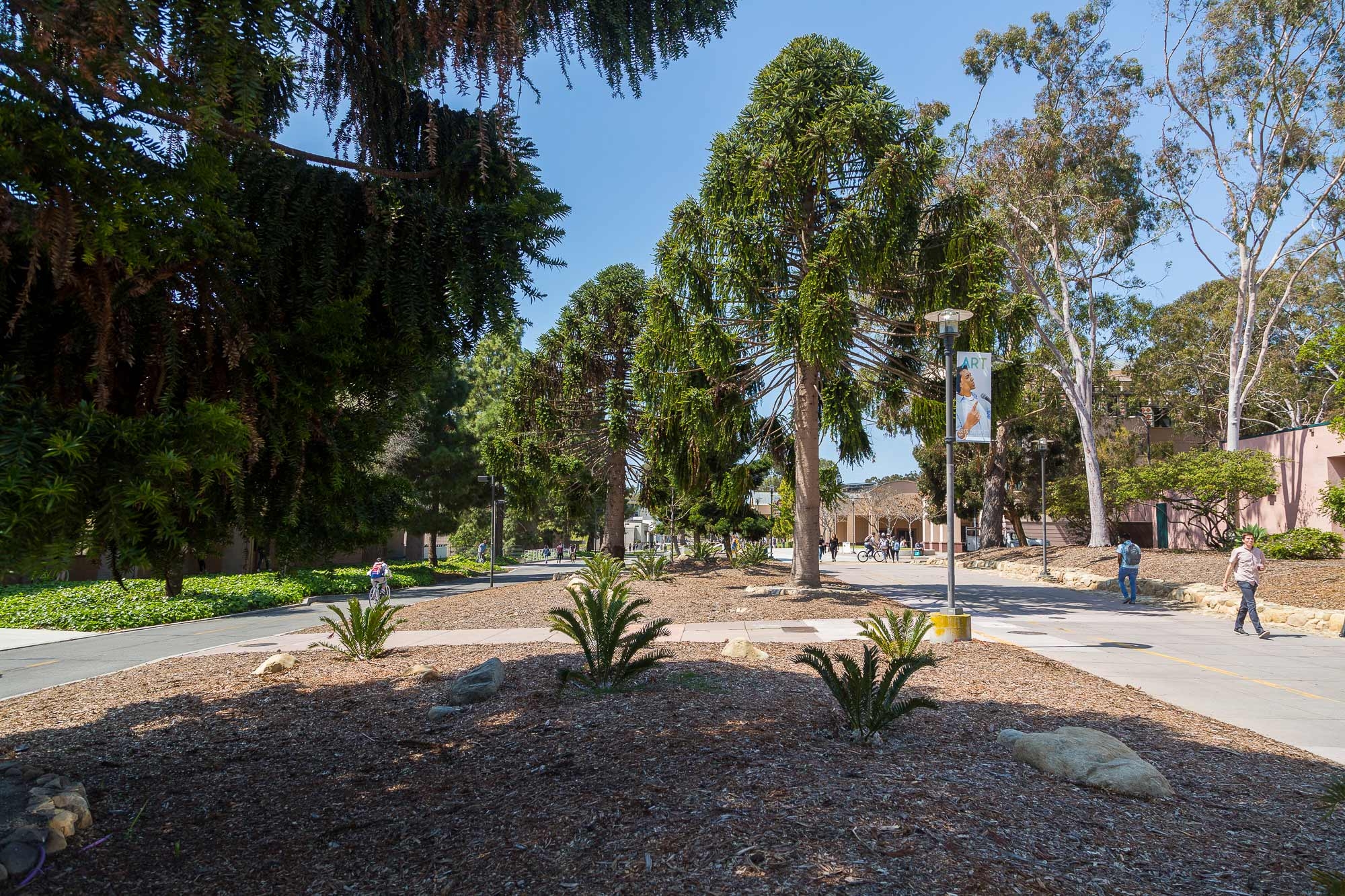
The three Araucaria bidwillii, or bunya pines, growing in front of Counseling and Career Services also hail from the southern hemisphere. Their unusual, scaly foliage is actually quite typical for its genus, which is only distantly related to true pines. This species can produce cones weighing up to 40 pounds, earning it the nickname “the widow-maker.” Mind the caution tape during summer, when the cones are developing, warned Greg Wahlert, a curator at the Cheadle Center for Biodiversity and Ecological Restoration (CCBER).
The Ubiquitous Eucalyptus
In the 1870s, the land that would later become UC Santa Barbara was owned by two brothers. The siblings planted a row of blue gum eucalyptus trees to mark the dividing line that separated their respective properties. Many of these trees are still standing.
In the 1920s, the land was mostly bean fields, and the farmers added more rows of the tall, drought-tolerant eucalyptus trees as windbreaks. Some of these windrows are still visible: One stretches from Phelps Hall, across the chemistry lawn, and past Webb and Noble halls toward the coast.
“They were initially planted as windbreaks against the prevailing westerlies,” explained paleobotanist Bruce Tiffney, interim dean of the College of Creative Studies. “So if you look on campus, these guys are always oriented in north-south lines.”
Blue gums are robust trees, but after decades of watering, root rot has taken hold of many of the larger ones. These weakened trees are prone to collapsing. Tiffney said he hopes the university replaces them soon, he said, perhaps with younger, stronger tree specimens. It’s sad, but necessary, he added, given the hazard toppling blue gums pose.
Elsewhere in the state, blue gum is considered an invasive species. Like many eucalypts, it is prone to catching fire and dropping limbs. It also releases chemicals into the soil that inhibit the growth of plants around them. However, with careful management, the campus community can enjoy the fragrant tree alongside a number of other eucalypts, such as red ironbark, lemon eucalyptus and the Victorian silver gum, an endangered species with only two natural populations in southwestern Australia.
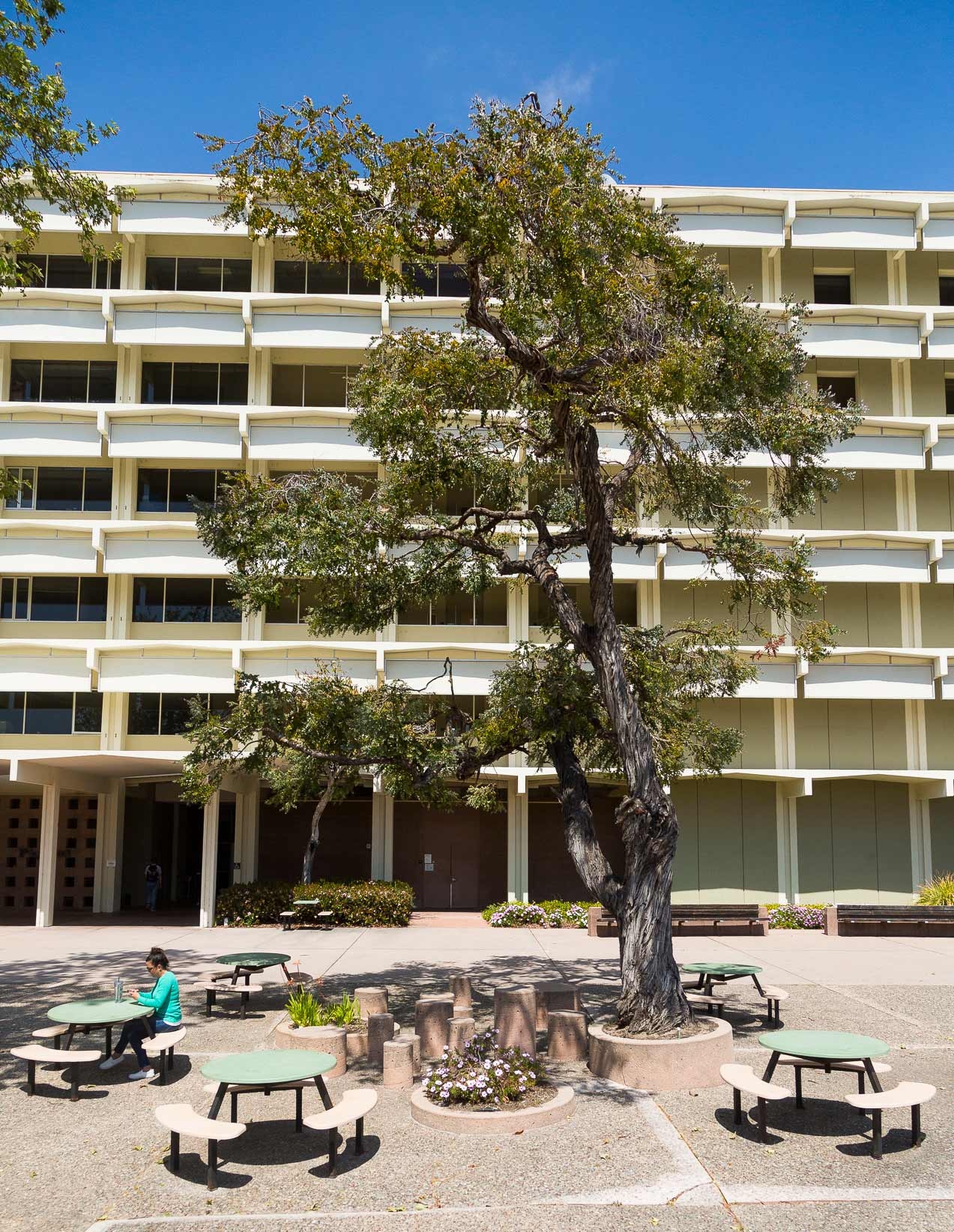
Dazzling displays of red
In spring — and in time for Arbor Day — the coral trees adorn themselves in deep scarlet. The trees hail from tropical and subtropical regions around the world, and their long, tubular flowers evolved specifically to attract hummingbirds.
Some of the coral trees probably joined the campus flora rather early on, said Bleck. Campus currently has 11 species, though there may have been more in the past. The university faculty and staff were keen on collecting as many varieties of the showy tree as possible, he noted.
Earlier in the season the large strawberry tree in Gevirtz Hall was awash in cascades of pink bell-shaped blossoms. Now these flowers are maturing into the tree’s eponymous bright red fruit, which have a subtle, mango-like flavor.
Native to the Mediterranean region as well as the western and northern regions of Europe, the strawberry tree has graced the Gevirtz courtyard for longer than anyone can recall. Even Bleck can’t remember how it got here. But the community enjoyed the tree so much that he recommended the university plant more. That’s how the campus ended up with strawberry trees from Bren Hall all the way to the Student Resource Building.
As spring progresses the leaves are returning to the two dawn redwoods growing on the northwest corner of South Hall. Scientists thought the deciduous conifer — related to California’s sequoia and redwood — had gone extinct millions of years ago until it was discovered in a remote area of China’s Hubei province in 1944. According to Bleck, the endangered trees most likely joined the campus scenery under Will Beitel, the university’s first greenhouse manager.
Earlier in the season the large strawberry tree in Gevirtz Hall was awash in cascades of pink bell-shaped blossoms. Now these flowers are maturing into the tree’s eponymous bright red fruit, which have a subtle, mango-like flavor.
Native to the Mediterranean region as well as the western and northern regions of Europe, the strawberry tree has graced the Gevirtz courtyard for longer than anyone can recall. Even Bleck can’t remember how it got here. But the community enjoyed the tree so much that he recommended the university plant more. That’s how the campus ended up with strawberry trees from Bren Hall all the way to the Student Resource Building.
As spring progresses the leaves are returning to the two dawn redwoods growing on the northwest corner of South Hall. Scientists thought the deciduous conifer — related to California’s sequoia and redwood — had gone extinct millions of years ago until it was discovered in a remote area of China’s Hubei province in 1944. According to Bleck, the endangered trees most likely joined the campus scenery under Will Beitel, the university’s first greenhouse manager.
A Living Classroom
The trees on campus found a champion in Vernon Cheadle, the university’s second chancellor, who came to Santa Barbara in 1962. A plant anatomist by training, Cheadle presided over the diversification of the botanical faculty, who collectively set out transforming the campus into a veritable botanic garden.
“Vernon recognized you can grow almost anything in Santa Barbara as long as you add water,” said Tiffney. “And he really wanted the campus to become a giant botanical classroom/ botanical garden. So he and the other people he was working with in botanical sciences spent a lot of time indeed finding interesting plants and getting them planted.”
The campus still serves as a classroom to this day. Courses such as Introductory Biology, Plant Physiology, Botanical Illustration Independent Study, Ethnobotany, and others incorporate the campus flora into their syllabi.
“In New England, where I first took a plant systematics course, everything was either dried or preserved in alcohol,” Tiffney recalled. “When I taught that course here I literally didn’t have to find a preserved anything. I could get examples of most of the major plant families somewhere in Santa Barbara, 40 to 50 percent of them on campus.”
Revitalizing campus
For years CCBER maintained the Campus Flora Project, a comprehensive database of the plants on campus that covered nearly 90% of the university’s trees. “It was a map and a list of every tree growing on campus,” said Wahlert. Unfortunately, the system crashed several years ago, although some aspects of the map are still accessible online.
Wahlert and Hannah-Bick hope to restore the database. “Reviving the campus flora project would be so valuable,” said Hannah-Bick. With so many endangered species on campus, the database would aid efforts to preserve these species from extinction. The map could also serve as a guide for the campus community as well as for visitors.
Wahlert would like to improve the project, adding labels to the trees on campus and perhaps even incorporating QR codes and an interactive smartphone app. Ultimately, Wahlert and Hannah-Bick hope to have the university officially recognized as an arboretum.
Numerous resources are available for those interested in learning more about the campus’ botanic beauty. The university’s interactive map has six different flora filters highlighting things like edible plants on campus. Additionally, the CCBER website features downloadable pamphlets for three self-guided walking tours of campus flora. And The IV Ethnobotany Project contains still more information about useful plants around campus.
Harrison Tasoff
Science Writer
(805) 893-7220
harrisontasoff@ucsb.edu
